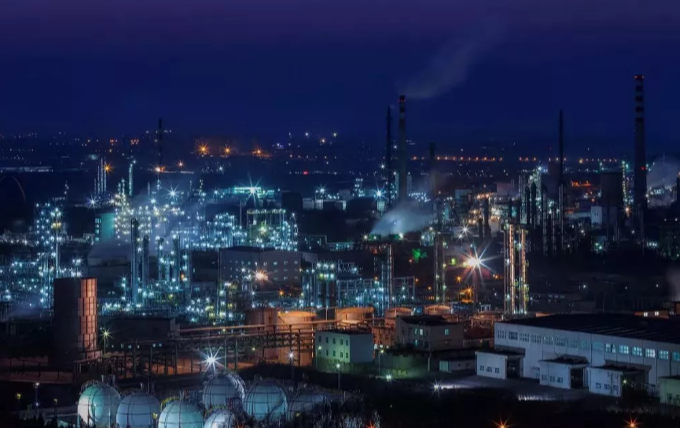Alternative analysis of coal chemical products
In the indirect liquefaction of coal, the raw coal is first gasification under the action of oxygen, and then the raw gas of carbon monoxide and hydrogen is obtained, that is, syngas. After sulfur removal, nitrogen removal and oxygen purification, the H2/CO ratio is adjusted to the appropriate value by water-gas reaction, and then Fischer-Tropsch (Fischer-Tropsch synthesis) catalyzed reaction, under a certain temperature, pressure and catalyst, H2 and CO are converted into linear hydrocarbons, water and a small amount of oxygen-containing organic compounds to synthesize liquid fuel.
5. Coal to DME: Cost advantage under economies of scale
As a basic chemical raw material, DME is easy to condense and vaporize, which makes DME have many unique uses in pharmaceutical, fuel, pesticide and other chemical industries. If used as a methylating agent to produce dimethyl sulfate,N, n-dimethylaniline, methyl acetate, acetic anhydride, ethylene dimethyl ester and ethylene can also be synthesized; It can also be used as alkylating agent, refrigerant, foaming agent, solvent, leaching agent, extraction agent, anesthetic, fuel, civilian composite ethanol and freon aerosol substitute.
Coal to DME is coal as raw material, through raw coal gasification, transformation, purification (desulfurization and decarbonization, etc.), methanol synthesis, the product methanol under the action of solid catalyst, dehydration reaction to DME. ZSM-5 molecular sieve containing γ-Al2O3/SiO2 is used as the dehydration catalyst at home and abroad. The reaction temperature is controlled at 280~340℃ and the pressure is 0.5-0.8MPa. The one-way conversion of methanol is between 70-85%, and the selectivity of dimethyl ether is greater than 98%.

Taking 1 million tons/year coal to DME project as an example, its total investment is about 8 billion yuan, and the unit product investment is about 8 000 yuan/ton of DME. As a substitute for petroleum, the fluctuation of international crude oil prices has a great impact on the cost competitiveness and economy of DME projects. When the international crude oil price is below 60 US dollars/barrel, even the construction of coal to DME projects in the pit is not competitive and economic.
To sum up, the economy of modern coal chemical industry, which replaces traditional petrochemical industry, is mainly affected by the price of crude oil. At the same time, the process equipment, raw materials, internal management, transportation conditions, terminal sales environment and other aspects of different projects of the same product are different, and their costs vary greatly. Overall, with the increase of oil prices, the economic competitiveness of coal-based chemical products (ethylene glycol, olefin) will be better than that of coal-based energy products (oil, dimethyl ether), that is, the profitability of coal-based chemical products is stronger than that of coal-based energy products.
Specifically, from the perspective of cost, when the oil price is less than 50 US dollars/barrel, the economic competitiveness of modern coal chemical industry is not ideal; When the oil price is 60~70 US dollars/barrel, the modern coal chemical industry has begun to become economically competitive, the order is: coal-to-olefin ≈ coal-to-ethylene glycol > coal-to-dimethyl ether > coal-to-oil; When the oil price is more than 70 US dollars/barrel, the economic competitiveness of modern coal chemical industry is further improved, and the benefit of coal to ethylene glycol is the best, followed by coal to olefin, and coal to oil and coal to DME are basically the same.
- EMERSON
- Honeywell
- CTI
- Rolls-Royce
- General Electric
- Woodward
- Yaskawa
- xYCOM
- Motorola
- Siemens
- Rockwell
- ABB
- B&R
- HIMA
- Construction site
- electricity
- Automobile market
- PLC
- DCS
- Motor drivers
- VSD
- Implications
- cement
- CO2
- CEM
- methane
- Artificial intelligence
- Titanic
- Solar energy
- Hydrogen fuel cell
- Hydrogen and fuel cells
- Hydrogen and oxygen fuel cells
- tyre
- Chemical fiber
- dynamo
- corpuscle
- Pulp and paper
- printing
- fossil
- FANUC
- Food and beverage
- Life science
- Sewage treatment
- Personal care
- electricity
- boats
- infrastructure
- Automobile industry
- metallurgy
- Nuclear power generation
- Geothermal power generation
- Water and wastewater
- Infrastructure construction
- Mine hazard
- steel
- papermaking
- Natural gas industry
- Infrastructure construction
- Power and energy
- Rubber and plastic
- Renewable energy
- pharmacy
- mining
- Plastic industry
- Schneider
- Kongsberg
- NI
- Wind energy
- International petroleum
- International new energy network
- gas
- WATLOW
- ProSoft
- SEW
- wind
- ADVANCED
- Reliance
- YOKOGAWA
- TRICONEX
- FOXBORO
- METSO
- MAN
- Advantest
- ADVANCED
- ALSTOM
- Control Wave
- AB
- AMAT
- STUDER
- KONGSBERG
- MOTOROLA
- DANAHER MOTION
- Bently
- Galil
- EATON
- MOLEX
- Triconex
- DEIF
- B&W
- ZYGO
- Aerotech
- DANFOSS
- KOLLMORGEN
- Beijer
- Endress+Hauser
- MOOG
- KB
- Moxa
- Rexroth
- YAMAHA
- Johnson
- Westinghouse
- WAGO
- TOSHIBA
- TEKTRONIX


Email:wang@kongjiangauto.com



































































































































